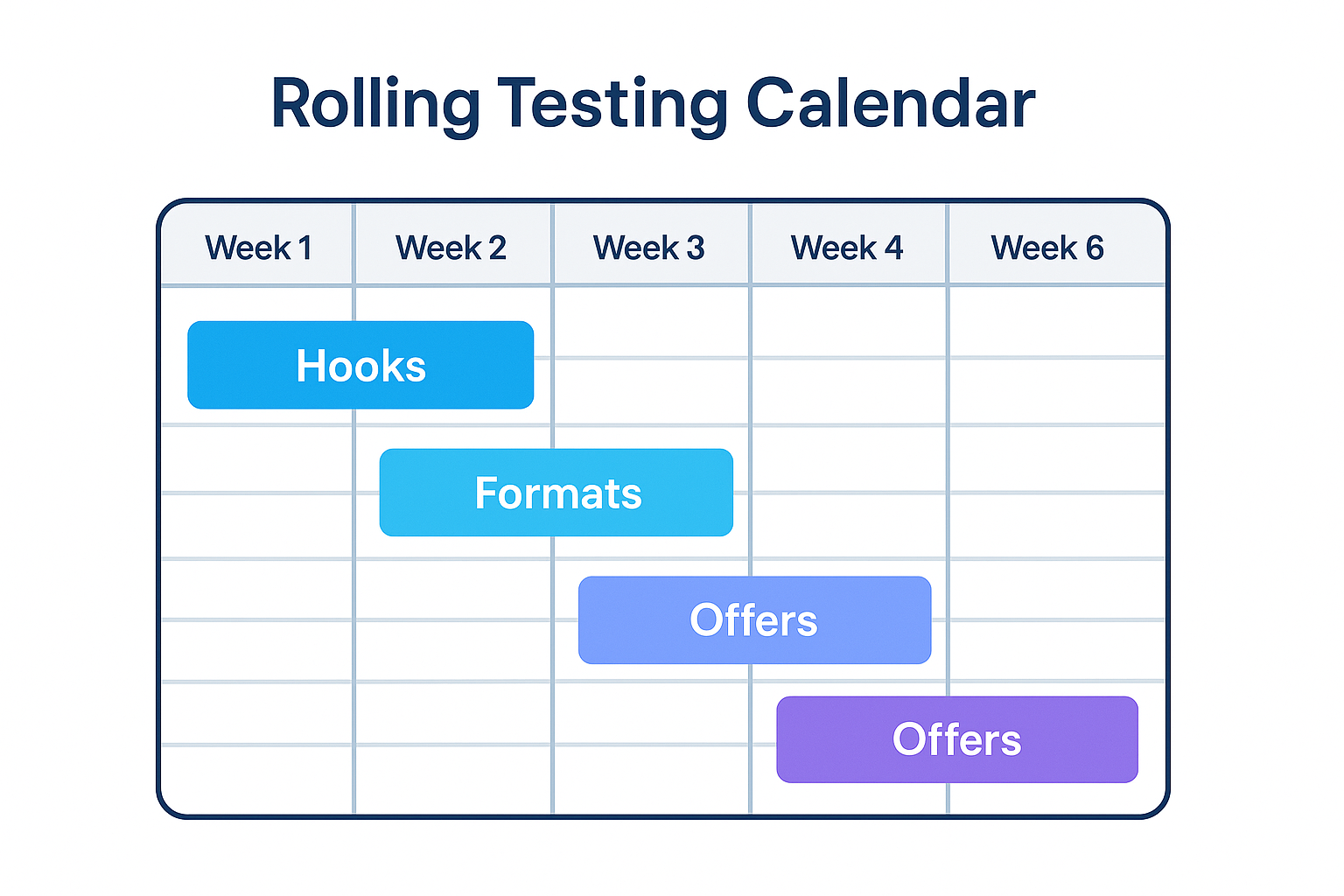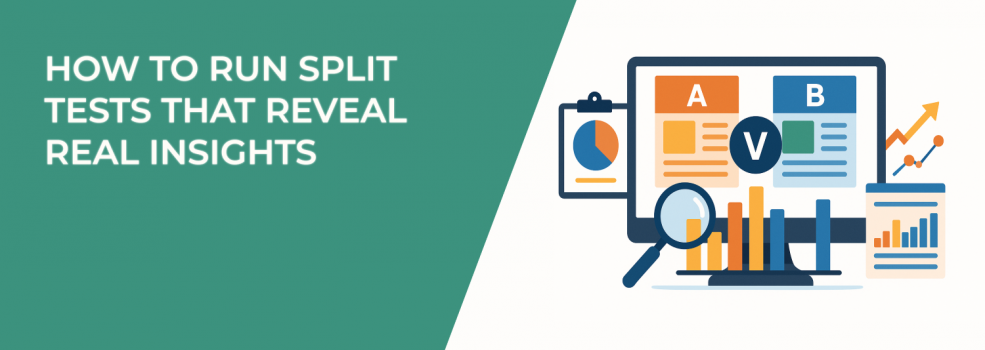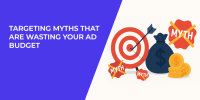Split testing is one of digital advertising’s most powerful tools — but also one of its most misused.
Too often, advertisers treat A/B testing as a performance hack rather than a learning opportunity. They test a headline, get a few conversions, pick the "winner", and move on. But surface-level wins don’t build long-term strategy. You need insight — the kind that teaches you how your audience thinks, behaves, and converts.
That means taking a more rigorous, strategic approach to how you design and analyze your split tests.
Let’s walk through how to do that — step by step.
1. Start With a Hypothesis — Not a Guess
Before running any test, ask yourself:
- What do I want to learn from this?
- What decision will this help me make?
This is where most marketers slip up. Testing shouldn’t be random — it should be hypothesis-driven.
A strong hypothesis is specific, measurable, and actionable. For example:
-
Hypothesis: Using urgency-based headlines (e.g., “Ends Tonight”) will generate higher click-through rates than benefit-driven headlines (e.g., “Grow Your Revenue").
→ This allows you to test intent-based language versus value-based framing. -
Hypothesis: Video ads will outperform static images in terms of engagement rate.
→ You're testing format-specific interaction — not just conversions. -
Hypothesis: Testimonials featuring peer-level customers will result in more conversions than those featuring authority figures.
→ You're evaluating message source credibility.
Want more ideas? Check out what to test first: creative, copy or audience.
2. Test One Variable at a Time — Seriously, Only One
Multi-variable tests often seem efficient — but they destroy clarity. If you're changing your ad copy, creative format, and CTA all at once, how will you know which factor influenced performance?

In a valid A/B test, everything should remain constant except for one element. Consider these controlled examples:
-
Testing copy: Same visual, same CTA, same audience. Only the headline changes.
-
Testing creative: Same headline, same targeting, same offer. Only the format differs (e.g., image vs. video).
-
Testing offer positioning: Same visual, same copy, same CTA. One ad offers a discount, the other offers free shipping.
If you want to test multiple variables, use a multivariate testing framework — but only if you have a sufficiently large budget and volume to power it.
Pro Tip: Use version naming conventions that reflect your hypothesis. For example, “Test_Hook_Urgency” vs “Test_Hook_Value” keeps your results easier to analyze later.
3. Segment Your Results by Audience — Or You’ll Miss the Point
One of the most common A/B testing mistakes? Looking only at aggregate performance.
Let’s say version A of your ad performs better overall. Great — but why? Could it be that it's only outperforming with mobile users? Or women aged 25–34? Or warm audiences who already know your brand?
You’ll never know unless you break down the data.
Use segmentation tools (inside Meta Ads Manager or platforms like Leadenforce) to analyze:
-
Demographics: Age, gender, location — key markers of behavioral differences.
-
Placement: Is the ad working better in Stories or in Feed? On Instagram or Facebook?
-
Funnel stage: Cold audiences, website visitors, or repeat purchasers may all respond differently.
-
Lookalike vs. interest vs. group-based audiences: These groups behave differently. Layering all into one campaign without separate insights weakens your strategy.
This kind of segmentation is essential. Here’s how to do it right: Maximizing ROI through Facebook audience segmentation.
4. Let the Test Run Long Enough — But Be Smart With Timing
A good test needs statistical significance — not just early performance. Too many advertisers kill or scale an ad after 24–48 hours because of "early winners."
But here's what really matters:
-
Impressions: Wait until each variation has delivered at least 1,000–2,000 impressions per audience segment.
-
Spend equality: Make sure both versions receive an equal or near-equal share of the budget. Otherwise, Meta’s delivery optimization could bias results.
-
Time of day/week: Buying behavior shifts based on time. A Friday launch might look different than a Monday morning test.
-
Learning phase: Don’t evaluate a test until ads are out of the learning phase — especially if your event volume is low. Learn more about how to finish the Facebook learning phase quickly.
Also, make sure your test isn’t blocked by targeting issues. Here’s what to do if you see "Ad Set May Get Zero".
5. Look Beyond the Conversion — Track the Behavior
Conversion is the ultimate goal — but it’s not the only signal worth paying attention to.
Behavioral data gives you richer insight into how people are engaging before they buy.
Track these key metrics:
-
Click-through rate (CTR): A high CTR with low conversions often indicates interest without alignment — maybe your ad overpromises.
-
Video watch rate / average play time: Tells you whether the message holds attention or drops off early.
-
Scroll depth or page time: Indicates landing page quality and alignment with the ad message.
-
Micro-conversions: Email signups, quiz completions, product views — all these show intermediate steps worth analyzing.
Need help diagnosing poor conversion performance? Read Facebook Ads Not Converting: How to Fix It.
6. Build a Continuous Testing Framework — Not Just One-Off Tests
A single test gives you one answer. A structured testing system gives you a strategy.
The best advertisers plan testing calendars. They map out what to test, when to test it, and how each test builds on the last.

Here’s a sample 6-week testing cycle:
-
Weeks 1–2: Test creative hooks (e.g., memes vs. data vs. testimonials).
-
Weeks 3–4: Test formats (e.g., static vs. video vs. carousel).
-
Weeks 5–6: Test offers (e.g., percentage discount vs. free trial vs. bonus gift).
Also consider how your campaign objectives influence your test outcomes. This guide helps: Meta Ad Campaign Objectives Explained.
7. Document Every Test — Even the Ones That "Lose"
A losing variation isn’t wasted effort. It’s a lesson.
But if you don’t document what you tried and what happened, you’ll forget it — or worse, someone else on your team will repeat it later.
Create a shared learning database. For each test, log:
-
Hypothesis — what you aimed to discover.
-
Test setup — which variable was changed and what remained constant.
-
Audience details — segments targeted and budget used.
-
Key metrics — CTR, conversion rate, cost per action, etc.
-
Insights — what you learned, even if the results were inconclusive.
Here's an example:
| Hypothesis | What was tested | Result summary | Actionable insight |
|---|---|---|---|
| Urgency boosts CTR | “Ends Tonight” vs. “Boost Sales” headlines | Urgency = higher CTR, fewer conversions | Use urgency in TOF only |
| Video outperforms static | Same copy, video vs. image | Video = more engagement & better ROAS | Use video for warm traffic |
| Group > Interest audiences | Lookalike vs. Targeting with LeadEnforce | Group = lower CPA, more engagement | Shift budget to group targeting |
| Benefit CTAs convert better | “Start Growing” vs. “Click to Buy” CTA | Benefit CTA = higher CVR | Use benefit-first CTA phrasing |
| Memes increase hook rate | Meme vs. branded image (same copy) | Memes = higher scroll stop, mixed feedback | Use for TOF, retarget with credibility |
This becomes a strategic archive — a playbook tailored to your brand, audience, and market.
Final Thoughts
Testing should be a form of research. Not just a way to pick better ads, but a way to get smarter about your audience.
When you test intentionally, isolate variables, segment data, and document outcomes — that’s when the insights get real.
And once your testing discipline becomes part of your team’s culture, campaign performance doesn’t just improve. Your whole marketing strategy levels up.

